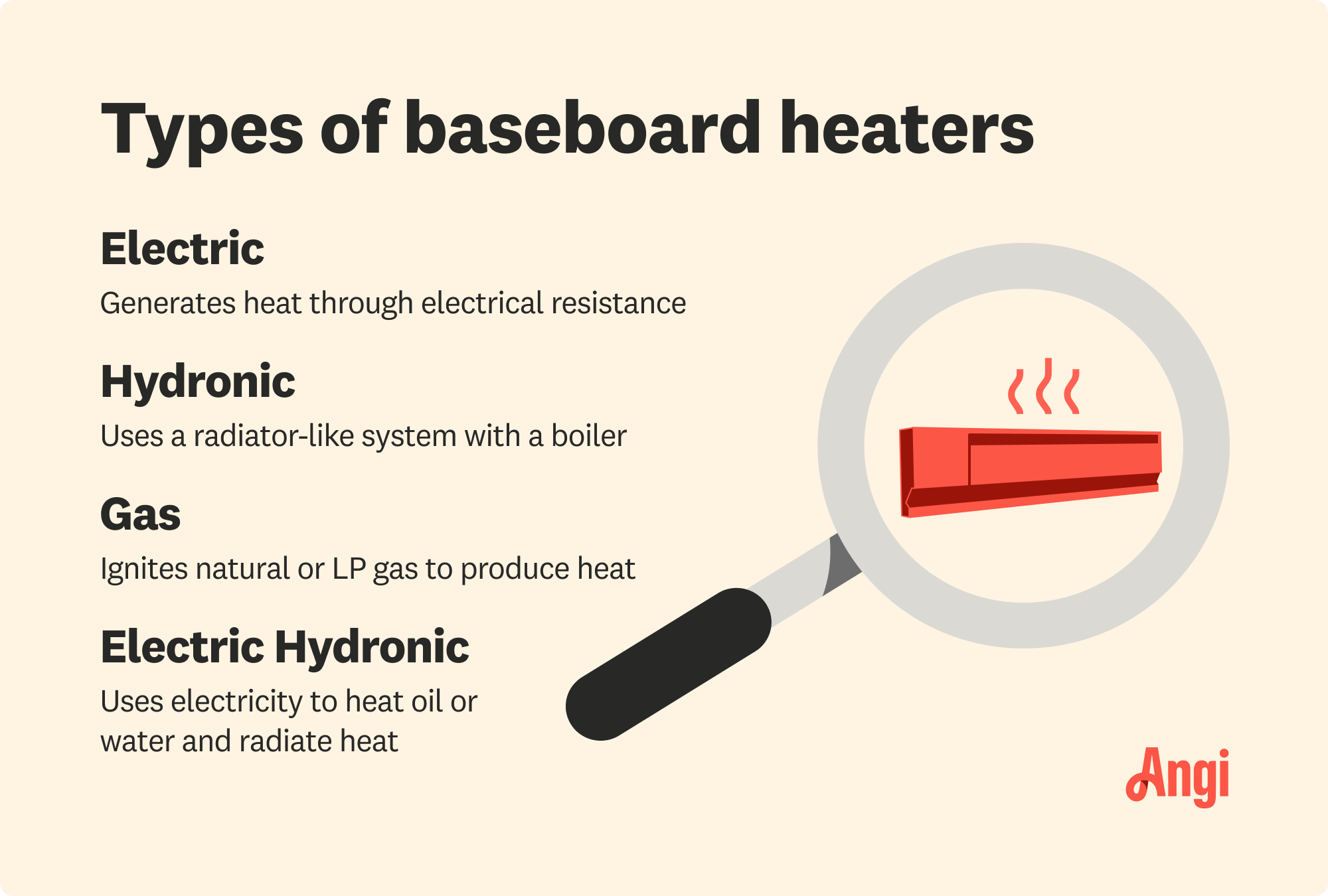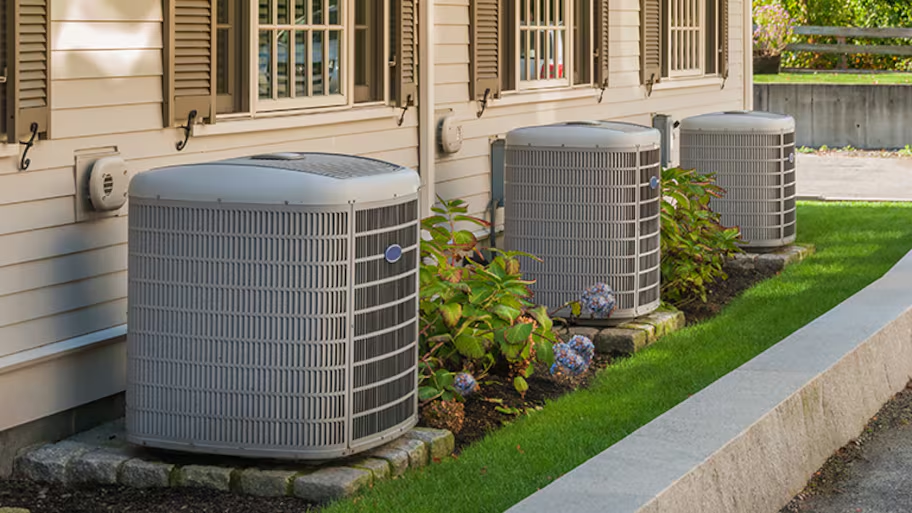
Discover the factors influencing air duct replacement cost in Dallas, TX. Learn how to save money and make an informed decision for your home's comfort.
Room-by-room heat systems are still a viable choice


Baseboard heaters sit against walls and radiate heat to warm a room, and they’re controlled with onboard knobs or a nearby thermostat.
Baseboard heaters can be electric, gas-powered, or hydronic with a boiler system.
These heaters don’t need ductwork or fans, and users can choose the temperature level in each room.
Baseboard heaters aren’t as efficient as other options and can create fire hazards or lead to unbalanced heating.
Baseboard heaters can be a good choice for finishing a room, heating a rarely-used guest room, or offering a secondary heating source for cold spaces.
While whole-house heating systems are common, not all homes have them, and they aren’t always an option for small homes or new additions. Baseboard heating allows you to warm specific rooms with a wall-based heater that runs on electricity, gas, or boiler-heated water.
However, baseboard heating has its pros and cons, so be sure to consult a local baseboard heating professional before installing them in your home. Let’s review what you need to know before choosing baseboard heating for a remodel or new home.

Baseboard heating is an alternative method of home heating that uses room-by-room heaters positioned close to the wall to maximize space. They’re named for their close proximity to the baseboards, or boards that line the bottom of the walls where they meet the floor.
Traditionally, baseboard heating is found in older homes or homes that don’t have a whole-house HVAC heating system. That’s how they avoid the need for central heating furnaces, fan systems, and ductwork. Adding baseboard heaters is an easier choice when remodeling, adding a room, or finishing a basement, with the help of a local baseboard heating installer.

There are several different types of baseboard heating, depending on how they generate heat. All three types look similar and operate the same way aside from their heat source. Baseboard heater controls are either housed in a nearby thermostat or use knobs and switches on the heater.
Electric baseboard heaters generate heat through electrical resistance when a current passes through them. Convection heaters are some of the least efficient and most costly heating options because of the amount of electricity they use, but you can install them nearly anywhere in your home with ease.
Gas baseboard heaters work like a small gas fireplace (albeit not as decorative), igniting natural or LP gas to produce direct heat. They are one of the least common types of baseboard heaters because of the installation costs, but they are very efficient to run.
Hydronic baseboard heaters use a radiator-like system with a boiler that heats pressurized water and sends it through baseboard heaters. The water’s heat then radiates out into the room. This type of baseboard heater has the least risk of causing fires or heat damage, but requires much more maintenance when taking care of your boiler.

While baseboard heating isn’t as common as a central system, it has important advantages, which include:
Targeted heating by room: Many baseboard heaters allow you to heat a specific room, quickly and easily. That can help save energy, and it lets you adjust heat in each room based on its use or the location of cold spots in a house.
Saving money on remodeling: Since baseboard heaters don’t need fans or ductwork, they’re less expensive to install if you are adding a new room or finishing a room. Since they aren’t connected to the main heating system, they’re a great choice if you want to rent out a section of your home.
Less dust and allergens: Without ducts and a fan blowing air, baseboard heaters reduce moving air and limit the places that dust or allergens can hide out.
Simple maintenance: With few moving parts and basic, easy-to-reach components, many baseboard heaters are low maintenance and easy to care for. Hydronic baseboard heaters take more work because of the boiler, but they compare favorably to managing an HVAC furnace.
Baseboard heating has its drawbacks, especially compared to whole-house systems.
More expensive: Even when using zone heating and targeting specific rooms, baseboard heaters can be expensive to run. The cost to run baseboard heaters for 10 hours per day is $500 to $1,000 per month.
Fire hazards: Baseboard heaters generate lots of direct heat, which create safety hazards. If turned too high or left on too long, they can melt and scorch surrounding materials, even nearby walls. They may cause house fires as a result, especially when left unsupervised.
Limited reach: Baseboard heating radiates out from the heater into the room. That’s great when you’re close to the heater, not so much when you’re on the other side of the room. That’s why these heaters struggle in large rooms (which may need more than one baseboard heater) and work best in smaller areas.
Heating takes longer: Without a forced air system, baseboard heaters struggle to heat a room quickly, so it will take longer for a thermostat to register. That’s especially true of hydronic systems. Unfortunately, that may lead to uneven heating results.
So, when are baseboard heaters the right choice in today’s homes? Think about these scenarios:
You only need to heat one room infrequently: Baseboard heaters can act as a secondary heat source for a room that gets cold easily, or a heating option for rarely-used rooms.
You need permanent heating without ductwork or a central furnace: If your home doesn’t have room for ductwork or you want to avoid the expense of installing a whole-house furnace and heating system, baseboard heaters are a feasible alternative.
You’re finishing a basement or attic: Finished basements and attics benefit most from a separate heating source, especially if you plan on renting them out.
You want to save money when adding a room: Baseboard heating has lower initial costs than adding ductwork during a remodel, helping to lower costs.
From average costs to expert advice, get all the answers you need to get your job done.

Discover the factors influencing air duct replacement cost in Dallas, TX. Learn how to save money and make an informed decision for your home's comfort.

What you’ll pay in Dallas, TX, for furnace repairs depends on many factors. Here’s a breakdown of what can go wrong and the cost to fix those issues.

HVAC replacement costs depend on a lot of factors, like unit type, size, and labor. See what you can expect to pay for HVAC replacement here.

Energy bills rising? Here’s how to perform a DIY duct leakage test to locate any damage in your ductwork and restore your energy-efficient home.
How to clean your air conditioner depends on the unit type. Sometimes, a good hose-down is all you need if you have centralized AC. This guide can help with the cleaning process.

Thinking about installing a heat pump in your home? Learn about the different types of heat pumps and the options you can choose from in this guide.